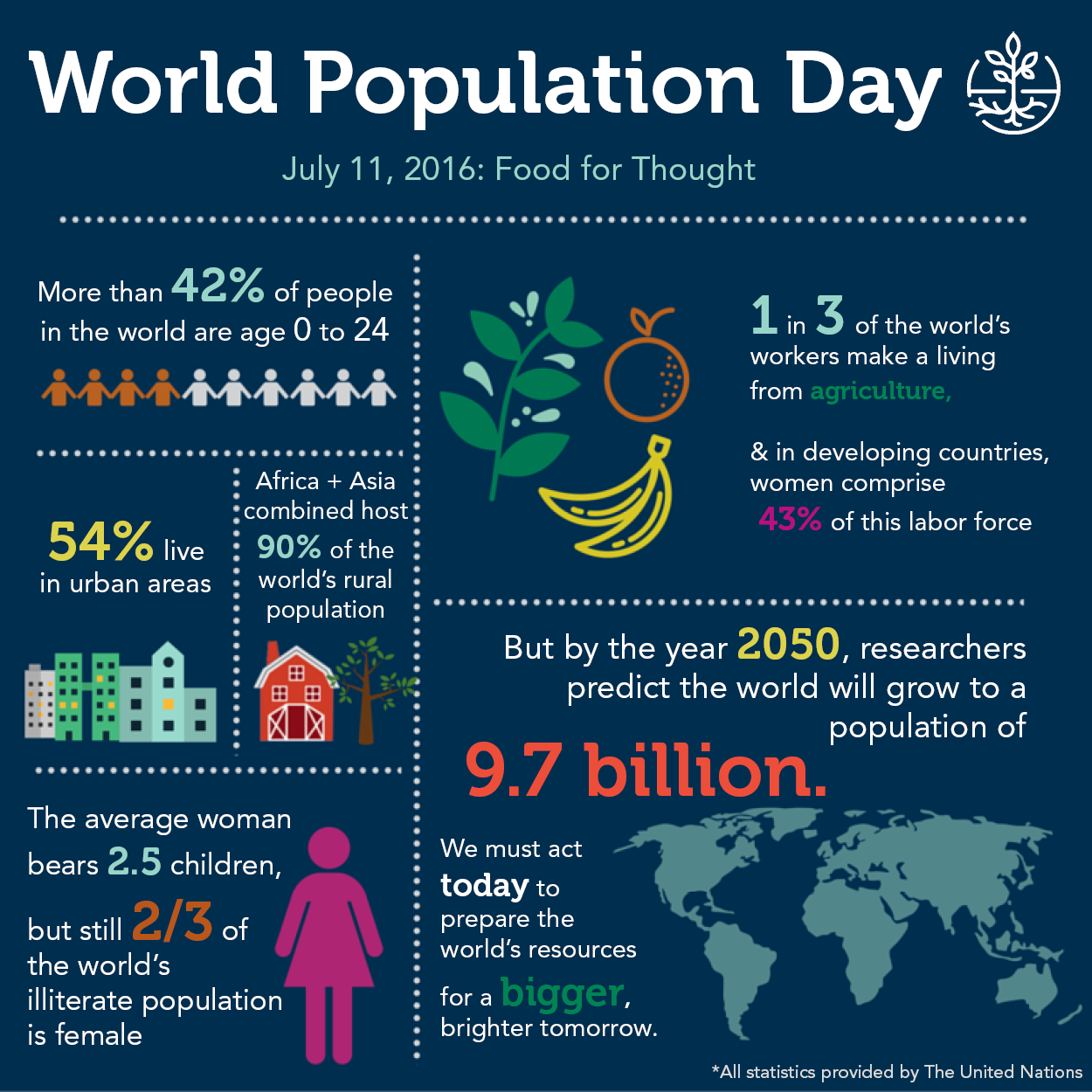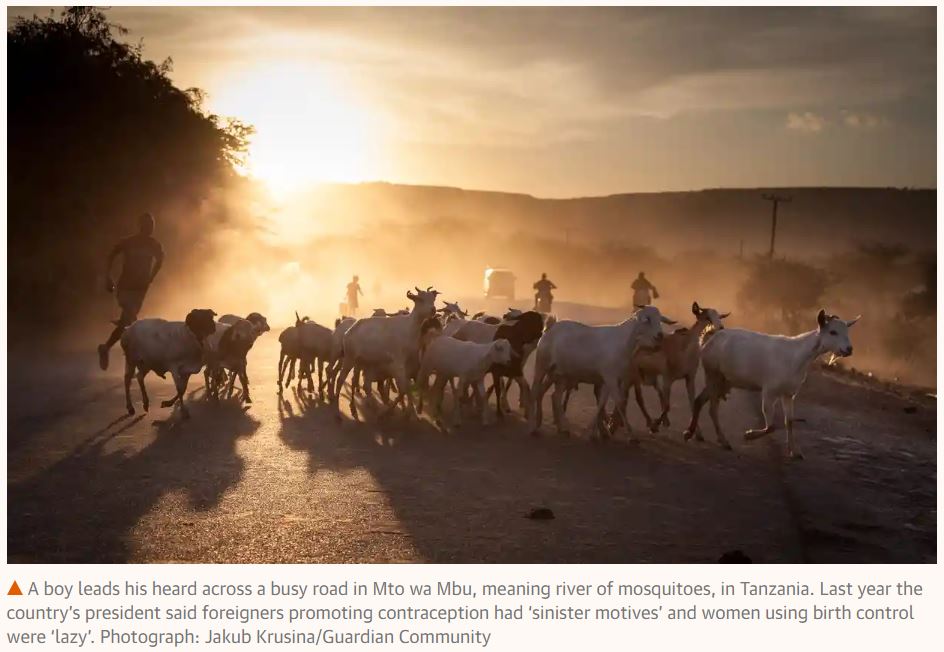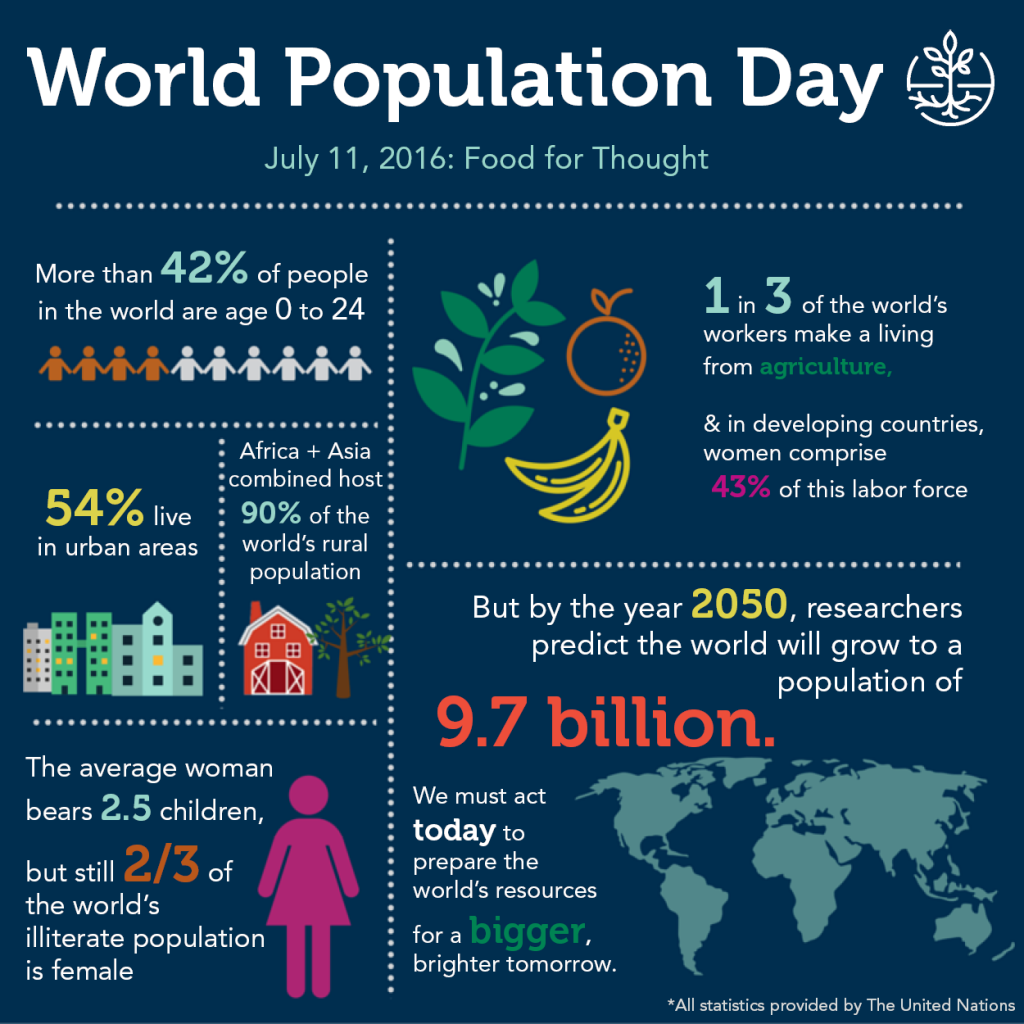
…Judith Dale, who built her career in education and serves as a board member of the Santa Ynez Valley Cottage Hospital Foundation, looks at population growth estimates and weighs in on the challenges the world will face when our fast-growing population reaches 11 billion by 2100.
“Africa’s population is expected to increase from 1.3 billion to 4.3 billion. Projections show these gains will come mostly in sub-Saharan Africa, which is expected to more than triple in population by 2100…”
“Future generations will face war, famine, massive migration, and genocide of ethnic and religious groups.”

The population of the world is currently about 7.7 billion people and growing at a rate of around 1.07% per year. In an effort to focus global attention on population issues and crises such as displaced people, rights and needs of women and girls, and population safety, the United Nations designated July 11 as World Population Day in 1989.
World Population Day serves to highlight the challenges and opportunities of this growth and its impact on our planet’s sustainability, heavy urbanization, availability of health care and youth empowerment. And as countries become more prosperous (better economy, health care, etc.), it is reported that the birth rate decreases.
Therefore, it is estimated that the world population will continue grow in the 21st century, but at a much slower rate.
Worldwide population growth estimates according to Pew Research Center:
- The global fertility rate is expected to be 1.9 births per woman by 2100, down from 2.5 today. The rate is projected to fall below the replacement fertility rate (2.1 births per woman) by 2070. The replacement fertility rate is the number of births per woman needed to maintain a population’s size.
- The world’s median age is expected to increase to 42 in 2100, up from the current 31 – and from 24 in 1950. Between 2020 and 2100, the number of people ages 80 and older is expected to increase from 146 million to 881 million. Contributing factors to the rise in the median age are the increase in life expectancy and falling fertility rates.
- Africa is the only world region projected to have strong population growth for the rest of this century. Between 2020 and 2100, Africa’s population is expected to increase from 1.3 billion to 4.3 billion. Projections show these gains will come mostly in sub-Saharan Africa, which is expected to more than triple in population by 2100.
- Europe and Latin America are both expected to have declining populations by 2100. Europe’s population is projected to peak at 748 million in 2021. The Latin America and Caribbean region is expected to surpass Europe in population by 2037, before peaking at 768 million in 2058.
- The population of Asia is expected to increase from 4.6 billion in 2020 to 5.3 billion in 2055, then start to decline. China’s population is expected to peak in 2031, while the populations of Japan and South Korea are projected to decline after 2020. India’s population is expected to grow until 2059, when it will reach 1.7 billion. Meanwhile, Indonesia – the most populous country in Southeastern Asia – is projected to reach its peak population in 2067.
- In the Northern America region, migration from the rest of the world is expected to be the primary driver of continued population growth. The immigrant population in the United States is expected to see a net increase of 85 million over the next 80 years (2020 to 2100) according to the UN projections, roughly equal to the total of the next nine highest countries combined. In Canada, migration is likely to be a key driver of growth, as Canadian deaths are expected to outnumber births.
- India is projected to surpass China as the world’s most populous country by 2027. Meanwhile, Nigeria will surpass the U.S. as the third-largest country in the world in 2047, according to the projections.
In summary, if the standard of living worldwide continues to improve, the birth rate should go down. However, in order to support 11 billion people by 2100, we must change the way we use the world’s resources. The world economy must grow but if we don’t radically change the way we consume the planet, we will be heading for the end of our consumer society and standard of living as we know it.
At current trends, the planet cannot sustain twice as many people and a 26 times larger economy that will be needed to support additional people. According to the United Nations, there is need for a new industrial revolution where economic wealth goes hand-in-hand with environmental and social sustainability.
The challenge awaits us, and hopefully we are up for it. Otherwise future generations will face war, famine, massive migration, and genocide of ethnic and religious groups.


